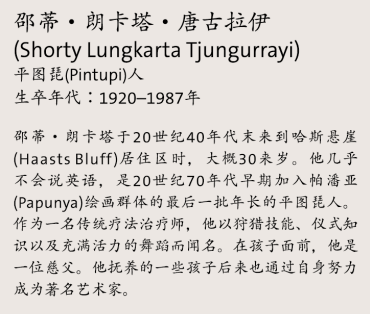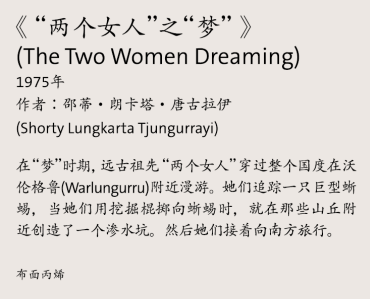Pintupi people

1920–87
Shorty Lungkarta was about 30 years old when he came to Haasts Bluff settlement in the late 1940s. He spoke almost no English and was one of the last senior Pintupi men to join the Papunya painting group in the early 1970s. A traditional healer, he was renowned for his hunting skills, ceremonial knowledge and his spirited dancing. A kindly father to his children, he also raised a number of other children who grew up to become famous artists in their own right.

The Two Women Dreaming, 1975The Two Women ancestors wandered through the country around Warlungurru in the Dreaming. They tracked a giant lizard, creating a soakage near the hills as they speared the lizard with a digging stick. The women then travelled to other places to the south. |
|
Punyurrpungkunya, 1977The central panel of this canvas describes the ancestral deeds of a group of Tingarri Men and their initiates who gathered at the soakage, west of Kintore, named in the painting's title. During ceremonial practices, the initiates dug holes to shelter from the heat and used chewing tobacco for sustenance. The group then travelled to a claypan site in the spinifex grass–sandhill country around Lake MacDonald. The men were accompanied by their wives, who carried wooden water containers and wore hair-string belts. |
|
Container, 1978The ancestral events represented on the outside of this container took place at a soakage where a group of men made camp. Two of the men went hunting in a sandy creek bed for the male and female Sandhill Python ancestors. The snakes evaded the hunters by digging holes (depicted as circles) into the sand, creating the soakage. Eventually they were caught and carried back to the camp to eat. Their dead bodies are the sinuous shapes surrounding the circles. Later, many young snakes hatched from the creek and dispersed over the land. |
|





